Global Water Intake Calculator
- Posted By:
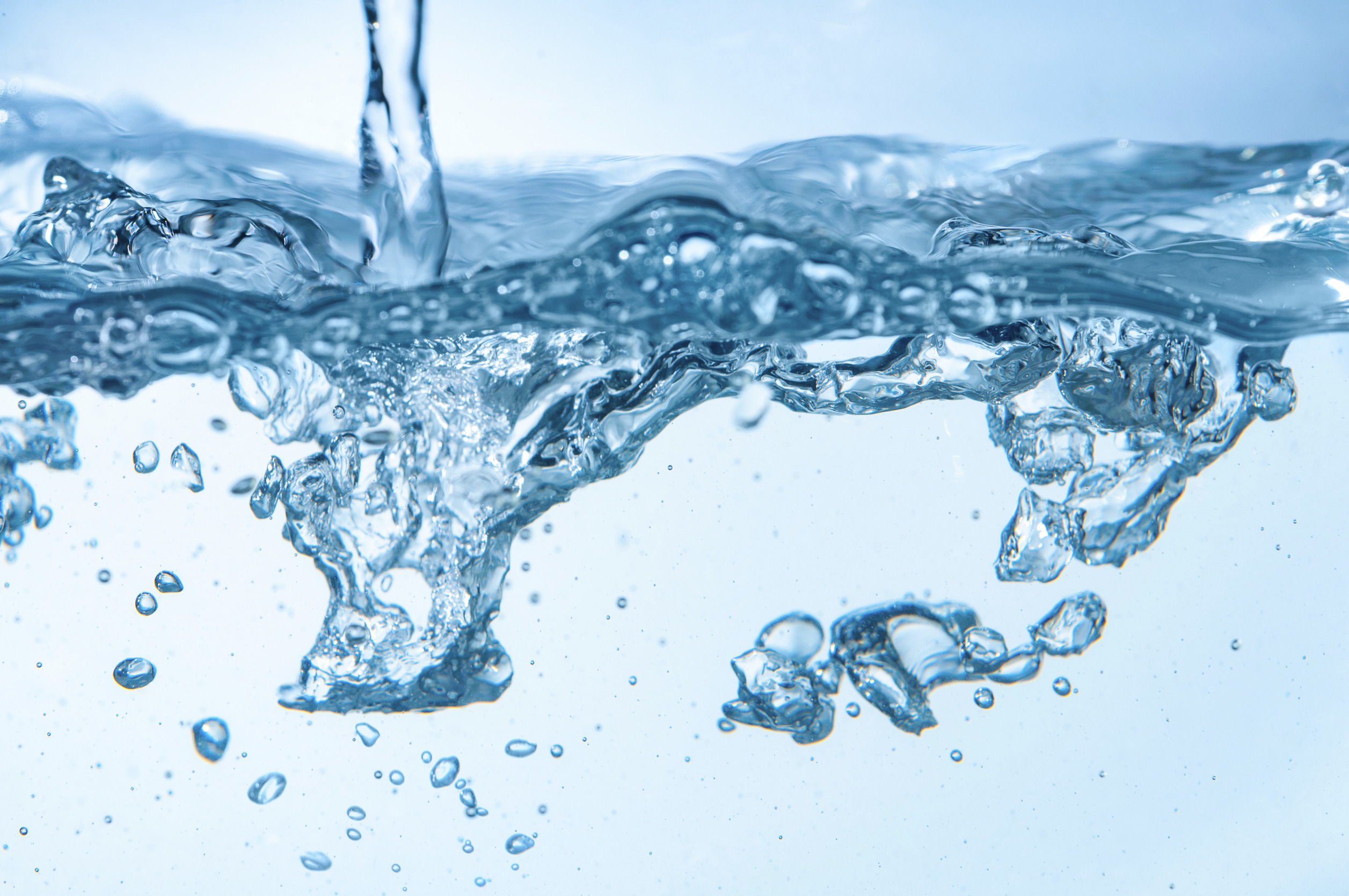
Global Water Intake Calculator
Tellusant often works with beverage companies participating in categories from milk to beer. How much water the human body needs is a fundamental metric to quantify when analyzing market opportunities. We therefore developed the Tellusant Global Water Intake Calculator. It is based on a few academic papers and a significant data collection effort.
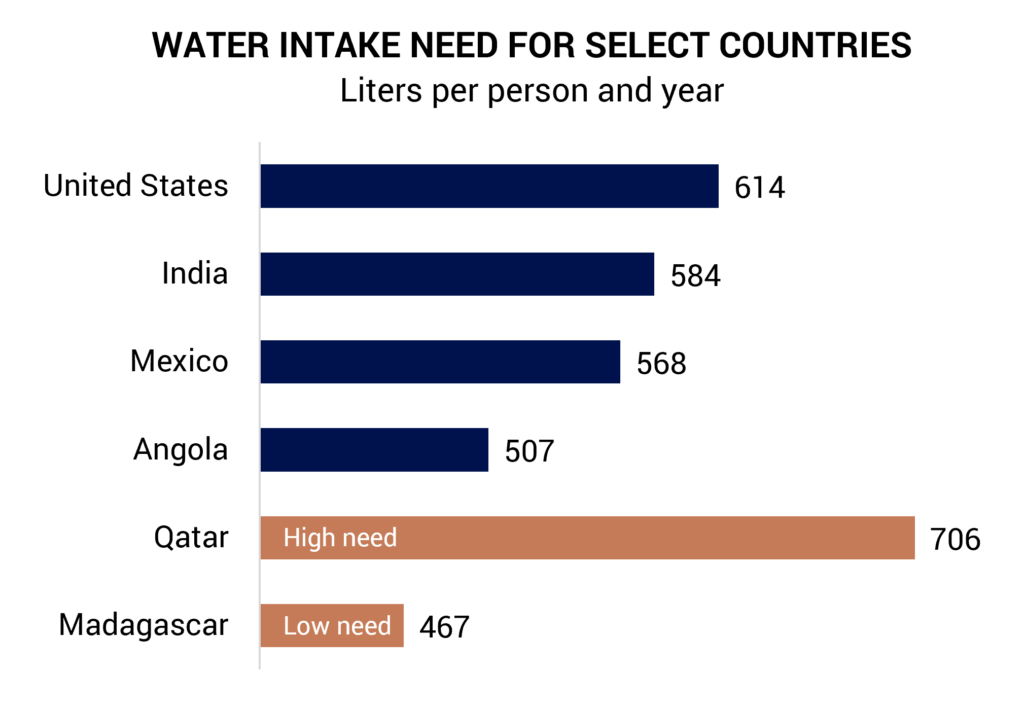
The Global Water Intake Calculator
The graph above shows how much beverage water the human body needs in a few select countries. We cover 218 countries. The calculator is based on a city-by-city data set aggregated to the country level (since large countries cover several climate zones). We therefore include 875 cities in the data set with at least one in each country.
The next graph shows how the body ingests water:
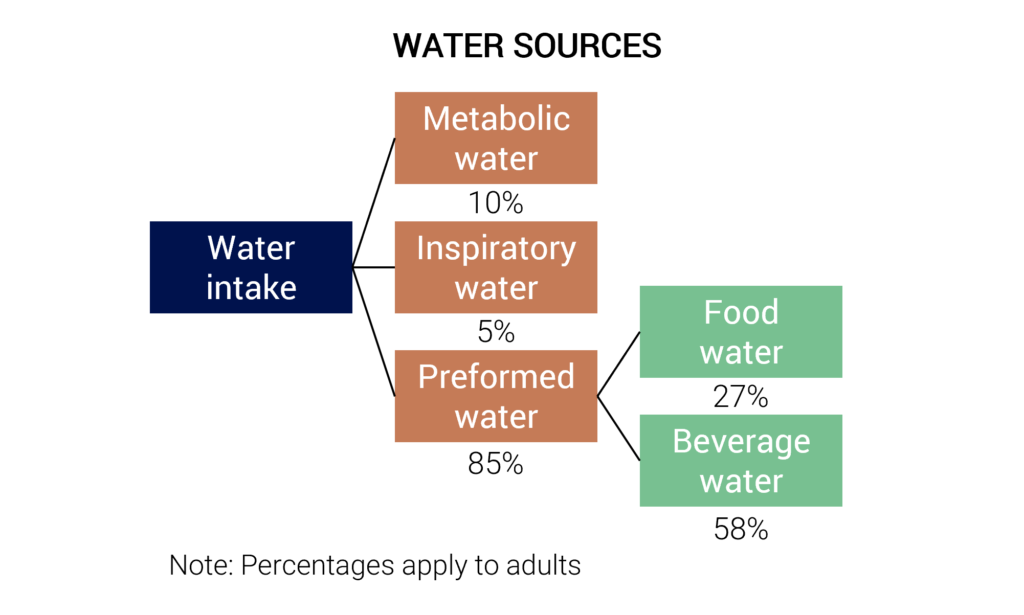
• Metabolic water is water produced by the body’s chemical processes when it generates energy.
• Inspiratory water is the opposite of perspiration (sweat). We absorb water through the air that we breath and through the skin.
• Preformed water comes either from food we eat or beverages we drink. Almost 60% of water needs come from beverages.
Determinants of Water Needs
What drives water needs? The graph below shows the main factors.
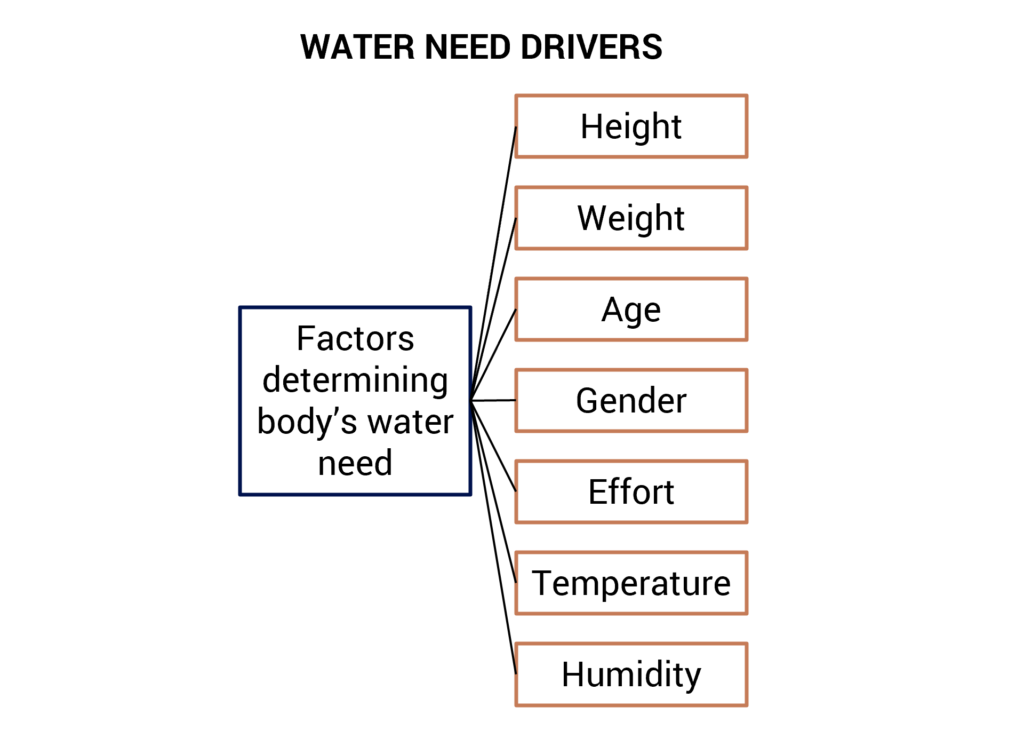
Each of these factors differ by country and by city. For example, if a country has a young population with many children the water need is lower. Also, if humidity is high, more water is inspired and less needs to be drunk. Therefore, the calculator takes these factors into account.
Finally, the water needed is compared to the water consumed. Consumption can be higher than 100% of needs, but if it is much higher we get sick or even die. The source paper from the U.S. Army discusses over-consumption’s debilitating consequences.
Water and Beverage Categories
The graph below shows the beverage categories. All except well and tap water are formal. If they add up to the water needed, then future market growth is limited.
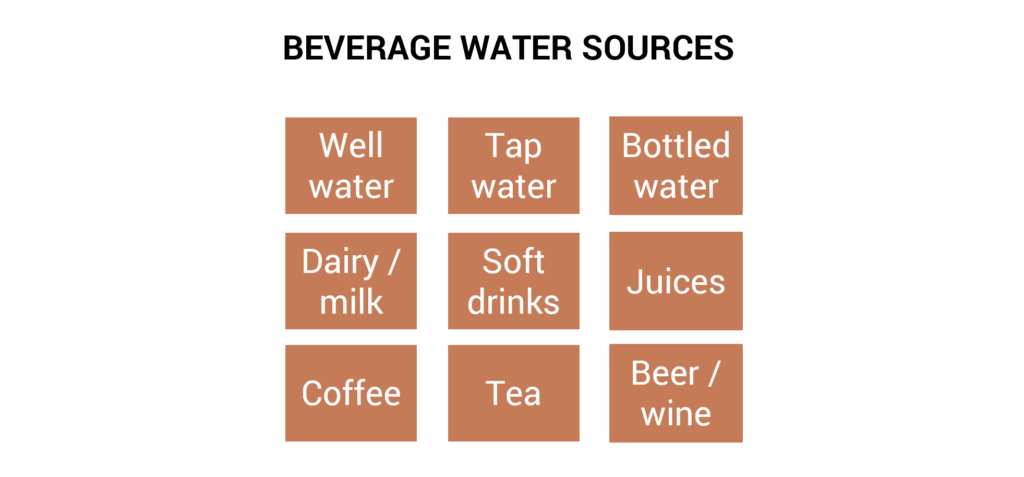
Thus the water intake calculator helps determine if a country’s formal beverage market is close to or even above the water needed by the body. For high consumption formal beverage countries this puts a limit to future growth, something not always understood by beverages companies.
Contact us about the Global Water Intake Calculator through this form, or send us an email at info@tellusant.com.
Sources
Adolph, E.F. and D.B. Dill (1938): Observations on Water Metabolism in the Desert. American Journal of Physiology. Vol. 123: pp. 369-378
Rahman et al. (2004): Water Turnover in 458 American Adults 40–79 Year of Age. Am J Physiol Renal Physiol. Vol. 286: pp. F394–F401
Montain, S. et al. [U.S. Army] (2001): Sustaining Hydration in Hot Weather. Paper presented at the RTO HFM Symposium on “Blowing Hot and Cold: Protecting Against Climatic Extremes”,
American Academy of Sciences (2001): Dietary Reference Intakes.